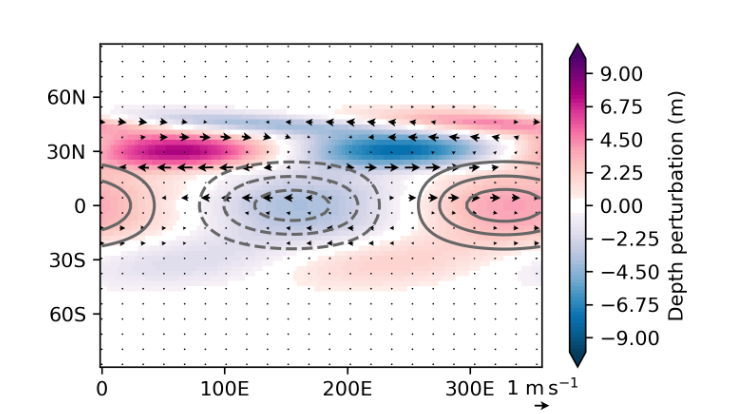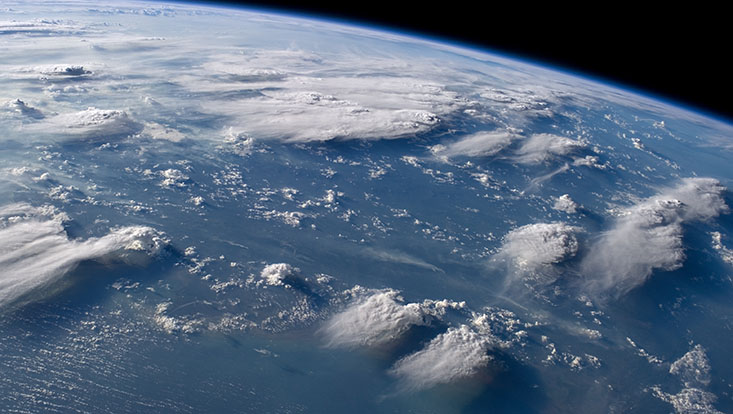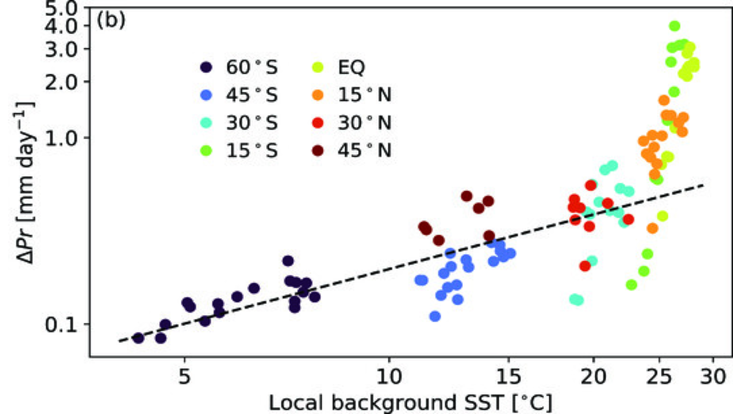Non-convective generation mechanism of the equatorial Kelvin wave explained
17 September 2024

Photo: UHH/Holube
Kelvin waves belong to the most studied motions in the atmosphere and ocean. In the atmosphere, they are tropically bounded, eastward-moving waves with the strongest perturbations in both wind and temperature (or pressure) on the equator. The main mechanism for the Kelvin wave excitation is deep tropical convection. Connections between subtropical dynamics and Kelvin waves have also been demonstrated. In her just published paper, Katharina M. Holube, the first doctoral student in the Meteorological institute and Department of Earth System Sciences of the UHH Fast-track program, has explained a mechanism for the resonant generation of Kelvin waves using numerical simulations. She and colleagues in the Atmospheric Dynamics and Predictability Group show how interactions between large-scale Rossby waves and the zonal mean flow in the subtropics excite the Kelvin wave. The results pave the way for a more detailed investigation of the extent to which subtropical processes affect the tropical Kelvin wave variability.
Details and further results: 10.1175/JAS-D-24-0033.1
If you have any questions, please contact us. We look forward to hearing from you!
More information
Animation: Shallow-water model simulation of Kelvin waves, subtropical Rossby waves and a zonal mean flow. The Kelvin wave depth perturbations are shown in grey with a spacing of 1 m. The zonal mean flow is not shown. (gif animation)
Publication: Holube, K. M., Lunkeit, F., Vasylkevych, S. and Žagar, N., 2024: Resonant excitation of Kelvin waves by interactions of subtropical Rossby waves and the zonal mean flow, J. Atmos. Sci., 10.1175/JAS-D-24-0033.1
DFG-funded project No. 461186383
Contact
Katharina M. Holube
Universität Hamburg
CEN – Center for Earth System Research and Sustainability
Telefon: +49 40 42838-9201
Email: katharina.holube@uni-hamburg.de


